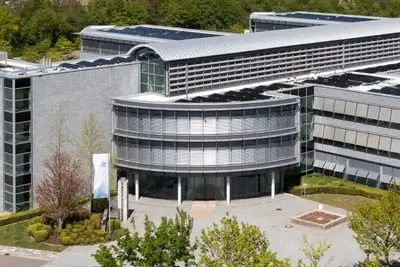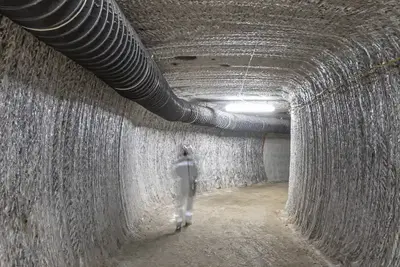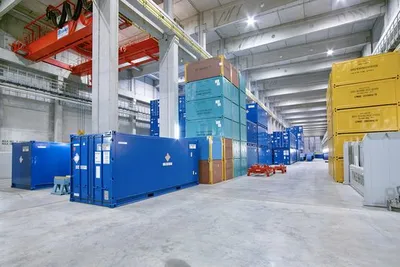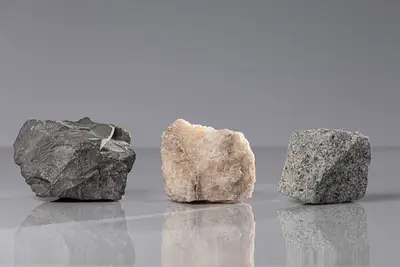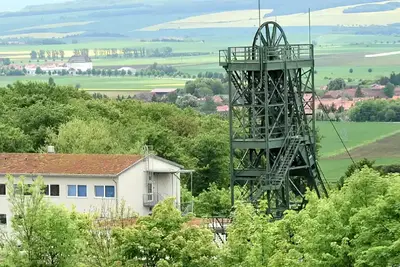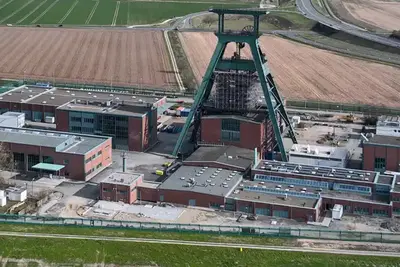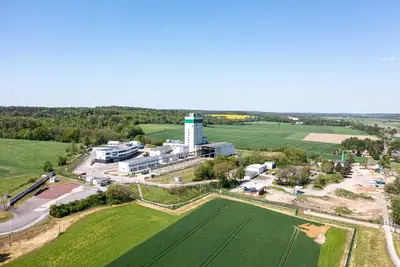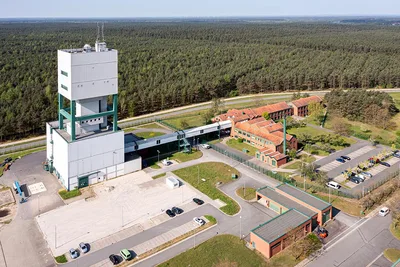Types of waste and how they are generated
Radioactive materials are distinguished between low-, intermediate-, and high-level radioactivity. Other factors such as the half-life for decay or the radiotoxicity (adverse health effects of radioactive substances) play a role in classifying radioactive waste.
In addition to radiological considerations (i.e. which radiation exposure the radioactive waste represents), heat generation in particular is a decisive feature. In the search for a repository, the exposure of the host rock to high heat emission must be considered. Germany has therefore decided to distinguish between two categories of radioactive waste:
- Heat-generating radioactive waste
These high-level radioactive materials from spent nuclear fuels and reprocessing emit heat because of their radioactive decay. Some intermediate-level radioactive waste is also included because of heat emission. - Radioactive waste with negligible heat generation
This includes low-level radioactive waste and most intermediate-level radioactive waste.
Rocks can dissipate heat to different degrees and have different thermal capacities. This means that their positive properties for disposal could be partially lost if the heat load is too high. A temperature increase of the rocks of less than 3°C can be neglected. This value corresponds to the natural increase in temperature at a depth difference of 100m in mines. For the Konrad repository, this condition was stipulated in the licensing procedure.
Generated through the decommissioning of nuclear power plants
Approximately 95% of radioactive waste originates from research as well as the operation and decommissioning of nuclear power plants. In Germany, roughly one third of nuclear waste originates from research institutions and the decommissioning of nuclear power plants from the GDR (German Democratic Republic). Two thirds of the waste come from the plants of energy suppliers. They have a much smaller share because they do not have to decommission large power plants. The Federal States are responsible for radioactive materials from industrial companies, university research, and medicine and collect them at regional collection points.
In relation to the quantity or volume of waste after its proper packing (conditioning), the following picture emerges:
- Approximately 27,000 m3 of the radioactive waste generate considerable amounts of heat.
- Up to 620,000 m3 of the radioactive waste generate lower amounts of heat. The total volume still largely depends on the volume of waste from the Asse II mine after recovery and conditioning. Furthermore, the amount of residues from uranium enrichment cannot yet be precisely quantified.
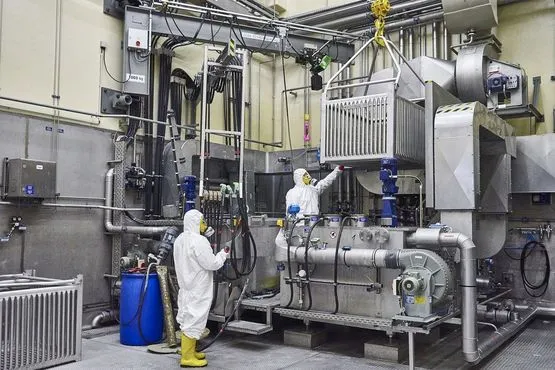
The old GDR nuclear power plants are being decommissioned and conditioned at the disposal plant for nuclear facilities in Greifswald/Lubmin.
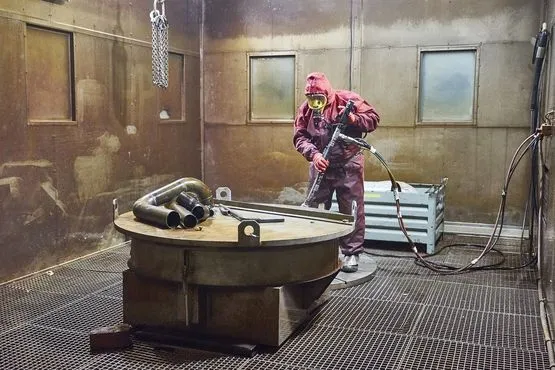
Radioactive deposits can be removed from surfaces using various methods. Here, steel parts are cleaned with high pressure steam.
What radioactive waste consists of
Radioactive waste refers to radioactive materials that are no longer needed after use and which cannot be used for other purposes. This applies, for example, to spent fuel elements from nuclear power plants. It also includes standard radioactive sources from industrial measuring equipment for recording fill levels as well as numerous radioactive materials from laboratories, companies, and hospitals.
Handling radioactive materials also contaminates tools, protective clothing, filters, cleaning agents, laboratory waste, disused plant components, and components such as pumps, pipelines, structural parts or other items. If the contamination can be removed, only the radioactive material accumulates as waste. Otherwise, the contaminated parts are also considered radioactive waste. These materials are classified as of low- and intermediate-level radioactive waste and have a negligible heat generation. Because these are often larger plant components with low radioactive components, their quantity is much greater than that of high-level radioactive materials.
The road to disposal is long
For around half (303,000 m3) of the low- and intermediate-level radioactive waste, Germany has found a disposal option in the form of the licensed Konrad repository. In the site selection process, the BGE has been commissioned to search for a suitable site for a repository for high-level radioactive waste in particular. The way to achieve this is legally defined in the Repository Site Selection Act. This is carried out in several steps.
In order to be able to progressively plan repository requirements, forecasts on the amount of radioactive waste are necessary. The forecast data are transmitted to the BGE by the waste producers. From the data, a comparison and assessment is made for the expected quantity and the repository volume required.
Briefly summarized
- Radioactive waste originates mainly from research and the operation and decommissioning of nuclear power plants.
- It is distinguished between different types of waste. The decisive factors are: how much heat it emits, and how high the radioactivity is.
- Germany has found a way to dispose of some of the waste (i.e. the low- and intermediate-level radioactive waste) with the Konrad repository.
- For the remaining waste, another repository site must be sought and licensed.

